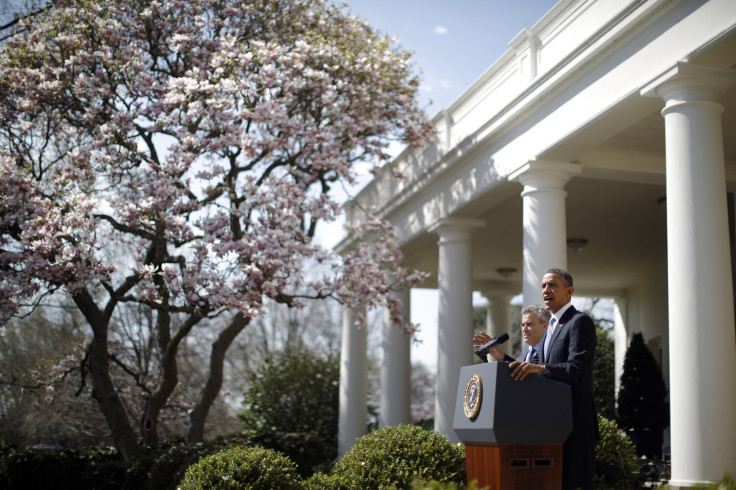Earth Day 2013: How Has President Obama Fared On The Environment?

Earth Day was established in 1970 to bring greater awareness to environmental issues, which presents an opportune moment to evaluate the environmental record of U.S. President Barack Obama’s administration thus far.
The president campaigned in 2008 on a number of promises to protect the environment and to help mitigate (even reverse) climate change, and his tenure has been marked by disastrous storms, droughts and wildfires, the 2010 Gulf of Mexico oil calamity and bitter debate over the proposed Keystone XL pipeline from Canada.
The Obama administration has implemented a number of environmental initiatives such as placing caps on air pollutants from coal-fired power plants and setting higher fuel efficiency standards for U.S. automakers. It has also increased funding for "green" energy projects such as wind and solar farms and pushed for investments in more efficient infrastructure like high-speed rail.
At the same time, to the disappointment of many environmental advocates, the president has promoted increased domestic production of oil and natural gas in a bid to further wean the U.S. off of foreign oil.
Furthermore, a few major environmental issues that have arisen over the course of Obama’s first term persist into his second.
The BP (NYSE: BP) oil leak in April 2010 marked one of the most severe environmental catastrophes in recent U.S. history and presented the Obama administration with a major challenge in how to respond.
In the immediate aftermath of the disaster, the president placed a six-month moratorium on all deepwater oil drilling, which environmental advocates hailed as the right decision at the time.
Three years on, however, the incident has faded from the national spotlight, while its impact is still being felt along the Gulf Coast.
Reports continue to surface of shrimp born without eyes and fish with multiple lesions, revealing not only the damage to the environment and ocean life, but to the livelihood of people in the fishing industry.
“The long-term damage from the spill has not been addressed,” said Melinda Pierce, chief lobbyist for the Sierra Club, told the International Business Times.
Pierce emphasized that addressing the lingering problems from the spill would require a greater effort from not just the administration, but Congress and the oil industry as well.
The larger question that remains is the future of offshore oil drilling, which environmental advocates say needs to end.
“We ought to learn from this (the BP oil spill),” said Bob Deans, spokesman for the National Resources Defense Council. “We can’t expose areas like the Arctic or (any offshore areas) to this kind of risk.”
Deans expressed concern that offshore drilling permits have increased 26 percent since before the BP oil spill.
Another major environmental issue is the proposal to construct the upper half of the Keystone XL pipeline, which would transport Canadian tar sands oil through the U.S. Midwest to the Texas Gulf Coast for refining and export.
The project has drawn vocal opposition from environmental advocates, particularly in light of last month’s oil spill in Arkansas, when an Exxon Mobil (NYSE: XOM) pipeline carrying tar sands crude ruptured, spilling oil into the streets of the town of Mayflower.
The Keystone project is currently under review by the State Department, which will make its recommendation to the president on whether to approve it.
The State Department’s environmental impact study of the project, which was published March 1, has been criticized by environmental advocates over its conclusion that the pipeline would have a minimal impact on carbon emissions.
“There are a lot of questions about that study,” said Pierce. “We feel it was inadequate.”
Regardless of the study’s results, environmental advocates remain hopeful that the Secretary of State John Kerry and Obama will reject the Keystone project.
Deans added that the most effective action Obama could take on the environment would be to place a cap on carbon emissions from power plants using executive powers under the Clean Air Act. Carbon emissions from power plants account for some 40 percent of total greenhouse gas output in the U.S.
Deans said a national cap should allow for some flexibility between different states and that it could feasibly reduce carbon emissions 25 percent by 2020.
The idea of a global carbon emissions cap has also been widely discussed at the international level, but continues to falter amid disagreements on how it could be applied to nations in different stages of economic development.
Deans said the U.S. must first implement its own cap without waiting for other countries to come around.
“We need to look at what we can do in this country,” said Deans. “We need to be at the forefront on this.”
© Copyright IBTimes 2024. All rights reserved.





















